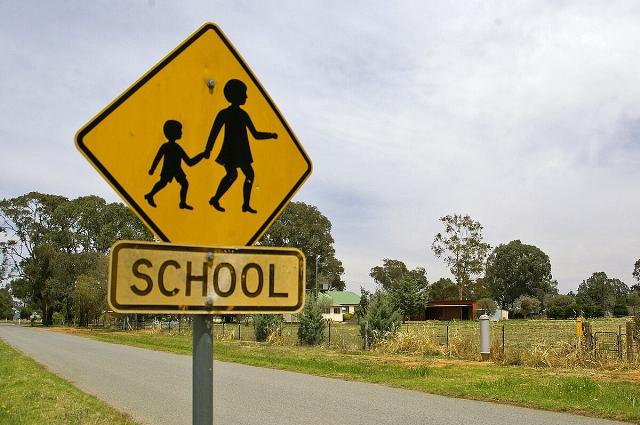Making room for microschooling
Today’s highly diversified microschooling movement is becoming one of the most compelling narratives in American education in a generation. Now the legacy frameworks which govern its adoption must modernize so its growth and evolution can maintain their trajectories as microschools gain popularity.
These nontraditional, innovative small learning environments are operating in communities across the nation. Families value them for different reasons, especially because their small size and flexibility allow them to be created and operated around the specific needs of the individual children they serve. As a result, participating children can feel heard, seen, and engaged as many never could in the larger, more rigid school systems that they had attended previously.
The distinct pluralism of this dynamic sector can seem in marked contrast to the legacy government school systems which have dominated the American K-12 education landscape for the past century. The big business of public education, and even a large share of private education, has sold Americans on the notion that schooling is an institutionalized activity that takes place in 50-year-old buildings that often cost $50 million to build, at a pricetag of over 4 percent of GDP, while posting persistently low productivity by its own measures.
Our current microschooling sector is likely better matched to prepare today’s children to succeed in the economy they will graduate into. Yet it is often restricted by constraints within policy and regulatory frameworks designed to govern 20th-century schooling.
Education in America is generally governed at the state level, with a patchwork of widely varying frameworks. Microschooling has grown in response to these many different frameworks, and to the educational needs of families within the nation’s complex education landscape.
Microschools are commonly organized either as small private schools or learning centers serving children whose families follow the homeschooling rules of their state. Additionally, some public charter schools or even district-operated public schools describe themselves as microschools.
As school-choice programs, and particularly Education Savings Accounts, have been established in a growing number of states in recent years, families have sought to use program dollars to attend microschools. In most states, however, microschooling is tuition based, sometimes with help from partners including nonprofits, houses of worship, employers, or even some government entities able to lend resources to lower costs and increase access.
Even in school-choice states, outdated regulatory and statutory frameworks often stand in the way of establishing the microschools families seek. Sometimes these barriers come in the form of rigid education mandates, such as seat time or educator and administrator licensing requirements.
Families often choose microschools because they lack confidence in other school options adequately preparing their children to succeed in the economy they will graduate into. These concerns often include whether their state’s academic content standards and standardized testing regimes represent the best path forward for their families’ education needs.
Restrictions holding back microschool growth are to be found in non-education frameworks as well, such as those governing zoning, land use, business licenses, or childcare facility requirements so voluminous as to effectively block the innovative small learning environments parents seek.
As capable education leaders work intently to improve America’s public schools, the growing number of families and educators driving today’s microschooling movement are simply too impatient for these improvements to advance to benefit their own children. Operating frameworks and requirements, including those for school choice programs, need to modernize to embrace the pioneering spirit alive in microschools.
Don Soifer is CEO of the nonprofit National Microschooling Center and coauthor of its new report, Microschool Trends in ESAStates.

Image: Bidgee
FOLLOW US ON
Recent Articles
- What’s the Real Target of the Assault on Tesla?
- MAGA: Progress, Not Perfection
- Saving American Culture through ‘Counter-Spoliation’
- Anecdotes from the Time of Autism
- War Is Hell
- Deep State Anatomy and Physiology
- Sisterhood of the Traveling Pronouns
- Trump’s Tariffs: A Chance to Bring Back Lost Jobs
- Trump's Six-Point Plan for Making America Great Again
- Make IRS Sauce The Same For Both Citizen Goose and Politician Gander
Blog Posts
- Baptists and Bootleggers
- Trump’s tariffs are all about putting America first after decades of exploitation
- The Dragon slips the spotlight
- VIDEO: Trump’s tariffs are necessary and completely pro-American
- The Left is experiencing the grief cycle on a loop
- The Democrats’ superiority complex
- On Wisconsin: The pundit class fumbles (again)
- Around the world, the smart way and the dumb way to respond to Trump's tariffs
- Burning Teslas
- Senator, you talk too much
- The Atlantic's phony migrant tear-jerker about a pitiful 'Maryland father' shipped back to El Salvador falls apart
- Rep. Luna, forgets she’s on the Republican Team!
- Veruca Salt politics or the inevitable result of ‘the personal is political’
- Taliban justice in the streets of Bordeaux, and a Sharia ‘mega city’ comes to Texas
- French judge releases an accused rapist because he’s ‘fairly integrated’






